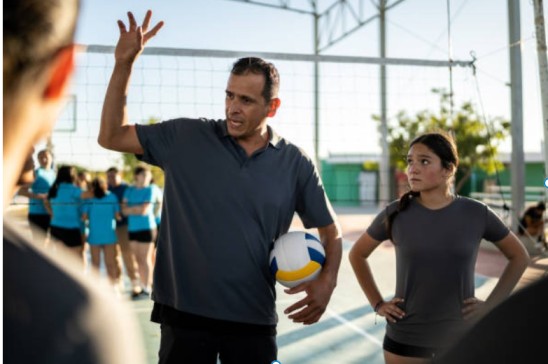Having versatility is highly valued, as it can greatly enhance a player’s performance and contribute to a team’s success. These adaptable players possess the ability to seamlessly transition between positions on the court based on the game’s demands.
Behind the scenes, experienced volleyball coaches play a role in nurturing and developing this versatility among players. This article delves into the techniques and strategies employed by coaches to cultivate versatility among volleyball players.
Techniques Trainers Use to Develop Versatile Volleyball Players
1. Comprehensive Skill Development
Versatility begins with a foundation of skills. Coaches prioritize providing players with skill development, ensuring proficiency in techniques such as serving, passing, setting, spiking and blocking. By mastering these skills, players become well equipped to handle different roles during matches.
2. Position Specific Training Exercises
Coaches design training exercises that specifically target positions and simulate real-game scenarios. These exercises allow players to practice the skills and movements associated with each position, gradually expanding their comfort zone and capabilities on the court. Through practice and targeted drills, players develop the muscle memory required to excel in every role.
3. Integration of cross-training
To improve athleticism and adaptability, coaches incorporate cross-training into their training programs. Engaging in a variety of volleyball training activities, like agility drills, strength conditioning and aerobic exercises, is vital for players to maintain their physical fitness. This enables them to handle the demands of positions and playing styles effectively.
4. Practice with Realistic Scenarios
To enhance players versatility, trainers organize game simulation practices that replicate real match conditions. These dynamic sessions expose players to situations encouraging thinking, decision-making abilities and seamless adaptation to various roles.
5. Strategic Rotation of Players
During team practices and scrimmages, trainers strategically rotate players across positions. This approach helps individuals develop a rounded skill set but also fosters teamwork as they gain a deeper understanding of the challenges faced by teammates in different roles.
6. Mental Conditioning
Versatility isn’t about capabilities; it also involves mental adaptability. Trainers prioritize mental conditioning techniques to help players maintain focus, confidence and composure when transitioning between positions. Activities, like visualization exercises and mindfulness practices contribute to thinking on the court.
7. Cultivating a Growth Mindset
Trainers instill in players the importance of having a growth mindset by emphasizing that versatility is a skill that can be nurtured over time through dedication and effort. This change in mindset encourages players to embrace challenges, learn from their mistakes and constantly strive to improve in all aspects of their game.
8. Personalized Training Plans
Recognizing that each player has strengths and areas for improvement, trainers create training plans tailored to individual needs. This customized approach ensures that players receive guidance to enhance their skills and adaptability based on their abilities.
9. Regular Evaluations of Positions
Trainers regularly assess players performances in various positions, providing feedback and identifying areas that need improvement. These evaluations serve as benchmarks for tracking progress and refining training plans to address skill development requirements.
10. Fostering Healthy Competition
Encouraging competition within the team cultivates a spirit of growth. Trainers organize challenges that push players out of their comfort zones, encouraging them to explore positions during practice matches. This creates an environment for skill exploration and development.
Conclusion
Trainers nurture athlete’s versatility with their expertise and insights. Through a combination of training techniques, mental conditioning and personalized approaches, trainers empower players to excel in positions on the court. As athletes embrace the challenge of becoming competitors, the sport world benefits from a generation of dynamic and adaptable athletes.




